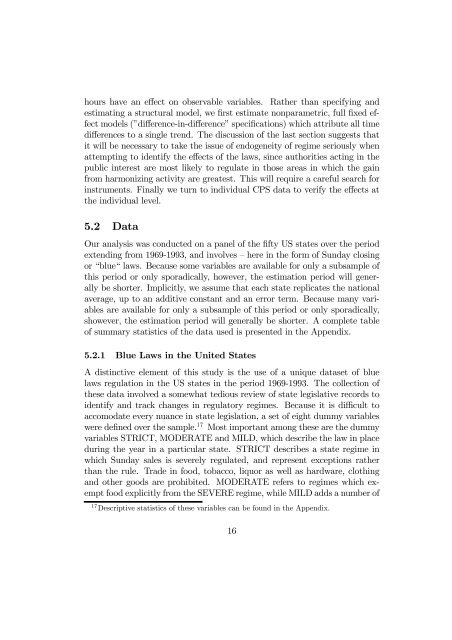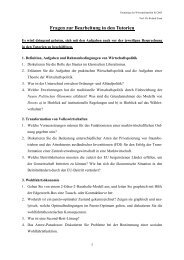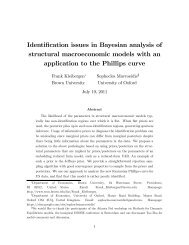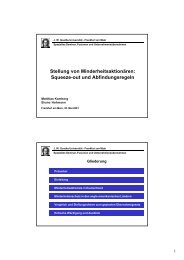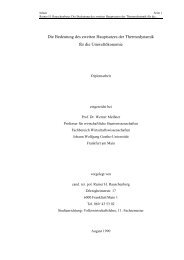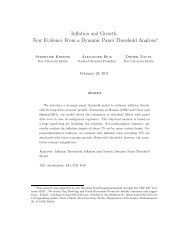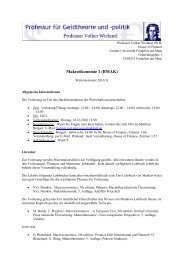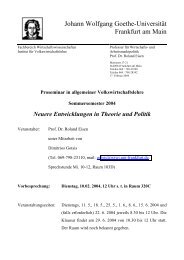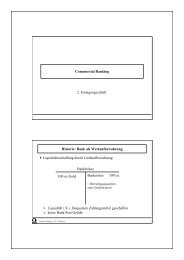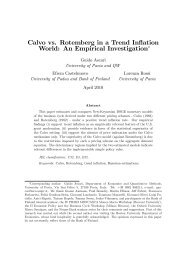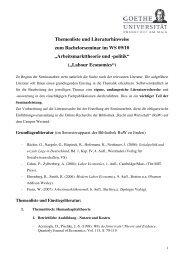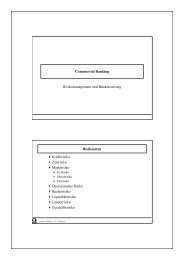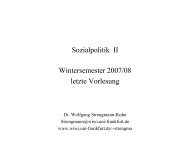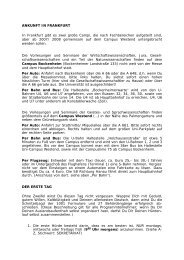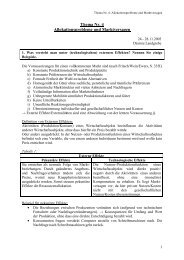Michael Burda - Sciences Po Spire
Michael Burda - Sciences Po Spire
Michael Burda - Sciences Po Spire
Create successful ePaper yourself
Turn your PDF publications into a flip-book with our unique Google optimized e-Paper software.
hours have an effect on observable variables. Rather than specifying and<br />
estimating a structural model, we first estimate nonparametric, full fixed effect<br />
models (”difference-in-difference” specifications) which attribute all time<br />
differences to a single trend. The discussion of the last section suggests that<br />
it will be necessary to take the issue of endogeneity of regime seriously when<br />
attempting to identify the effects of the laws, since authorities acting in the<br />
public interest are most likely to regulate in those areas in which the gain<br />
from harmonizing activity are greatest. This will require a careful search for<br />
instruments. Finally we turn to individual CPS data to verify the effects at<br />
the individual level.<br />
5.2 Data<br />
Our analysis was conducted on a panel of the fifty US states over the period<br />
extending from 1969-1993, and involves — here in the form of Sunday closing<br />
or “blue“ laws. Because some variables are available for only a subsample of<br />
this period or only sporadically, however, the estimation period will generally<br />
be shorter. Implicitly, we assume that each state replicates the national<br />
average, up to an additive constant and an error term. Because many variables<br />
are available for only a subsample of this period or only sporadically,<br />
showever, the estimation period will generally be shorter. A complete table<br />
of summary statistics of the data used is presented in the Appendix.<br />
5.2.1 Blue Laws in the United States<br />
A distinctive element of this study is the use of a unique dataset of blue<br />
laws regulation in the US states in the period 1969-1993. The collection of<br />
these data involved a somewhat tedious review of state legislative records to<br />
identify and track changes in regulatory regimes. Because it is difficult to<br />
accomodate every nuance in state legislation, a set of eight dummy variables<br />
were defined over the sample. 17 Most important among these are the dummy<br />
variables STRICT, MODERATE and MILD, which describe the law in place<br />
during the year in a particular state. STRICT describes a state regime in<br />
which Sunday sales is severely regulated, and represent exceptions rather<br />
than the rule. Trade in food, tobacco, liquor as well as hardware, clothing<br />
and other goods are prohibited. MODERATE refers to regimes which exempt<br />
food explicitly from the SEVERE regime, while MILD adds a number of<br />
17 Descriptive statistics of these variables can be found in the Appendix.<br />
16


